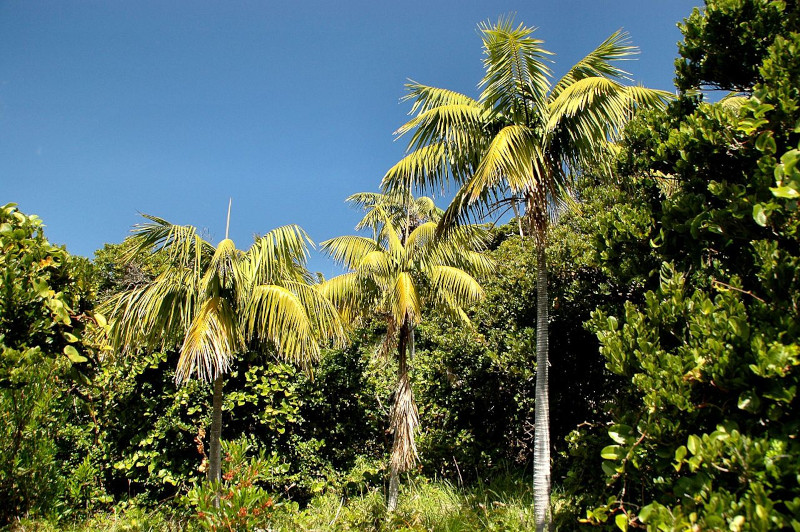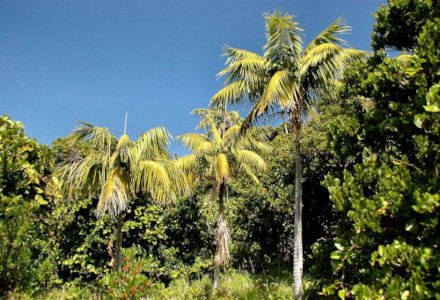
Kentia Palm Facts
- This gorgeous variety of tree is most frequently referred to by the common name of the Kentia Palm. It also holds claim to a unique status. It also has several other common names by which some refer to it, usally applied in various parts of the world.
- That’s because it’s also sometimes referred to by either the term of palm court palm or thatch palm. Professional researchers, however, typically refer to it by its scientific name. That’s the somewhat difficult to pronounce term of Howea forsteriana.
- The Italian naturalist, Odoardo Beccari made the first known official recognition of this tree as a separate and distinct species. He gave the plant its name in honor of the father and son team of naturalists, Johann Reinhold Forster and Georg Forster.
- This work of Nature gained great popularity as an ornamental plant during the Victorian Era. That popularity holds true even today. Due to that, more specimens of the palm tree likely exist outside of its natural range than appear in that range today.
- For the moment, the IUCN lists the fabulous Kentia Palm as Vulnerable. That status appears on the organization’s published Red List of Threatened Species. That’s because, while it’s widely distributed as an ornamental, in its native range it faces threats.
- Given its natural range, the threat of habitat loss remains one ever-present danger. It’s cultivated in that natural range, for its seeds, for the trade. Thankfully, that’s regulated, though. The extent of its range, however, makes it vulnerable to climate change.
Related Articles
Kentia Palm Physical Description
The beautiful Kentia Palm draws the attention of those who see it due to factors other than sheer size. That’s because it’s only a moderate-sized variety, compared to its many relatives. Yet, physical size alone isn’t always the most impressive feature of any species.
In its case, though, that’s not an important aspect of its visual appeal. This marvelous work of evolution attains a maximum known height of only about 33 ft (10 m). The spread of its many palms, however, frequently reaches as much as 20 ft (6 m) in total width.
In contrast, the trunk generally remains relatively quite slender. This further appears dark green while young, and slowlsy changes to brown over time. This feature of the tree also manifest numerous brown rings, resulting from the shedding of earlier palms.
Typically, around 36 of the impressive fronds appear atop the tree. These develop in a feather-shape, and range from 7 – 10 ft (2.1 – 3.0 m). This foliage also develops at the end of slender stems, themselves as much as 4 ft (1.3 m) in length. This makes for a striking crown.
This same foliage also presents its own striking color contrast. That’s because the leaves of the Kentia Palm present 2 different shades. The upper surface develops as a dark green in color. The lower side, meanwhile, presents a significantly lighter shade of green.
- Kingdom: Plantae
- Phylum: Angiosperms
- Class: Monocots
- Order: Arecales
- Family: Arecaceae
- Genus: Howea
- Species: H. forsteriana
Kentia Palm Distribution, Habitat, and Ecology
In the wild, the remarkable Kentia Palm faces dangers due to the nature of its habitat range. That holds true due to the fact that this wonder of Nature evolved as endemic to a highly limited portion of the globe. That’s because it only appears on 2 islands naturally.
Those 2 realtively small islands form part of what today we know as the fascinating country of Australia. Both locations actually lie at great distances from the mainland, however. This perhaps accounts for why the amazing tree does not appear on the continent itself.
In both locations, however, the species displays a fascinating, and highly helpful, adaptability. Due to that characteristic, it appears in virtually all parts of both islands. It also thrives in a wide range of temperatures, so it appears at both lower and higher altitudes.
It remains a comparatively slow-growing species, however. The small, oval-shaped fruit, as a result, rarely appears before an individual specimen reaches the age of 15 years. Once this process begins, however, the blooms and fruit generally develop every year.
Either in its native range, or the many parts of the world it’s been transplanted to, it shows its adaptability to different conditions. It does, though, have its preferences. It adapts well to regions of full, direct sunlight, but nevertheless clearly prefers shade or partial shade.
The germination rate for the Kentia Palm, at least in its native area, remains low, unfortunately. That’s part of its somewhat precarious state. The plant further requires an adequate amount of rainfall, with adequate drainage, to prevent rotting of the roots.
Species Sharing Its Range
Check out our other articles on 3 Tantalizing Tasmanian Animals, Guinan cock-of-the-rock, Victoria Falls, Flying Duck Orchid, Bonnethead Shark, Green Milkweed Grasshopper

